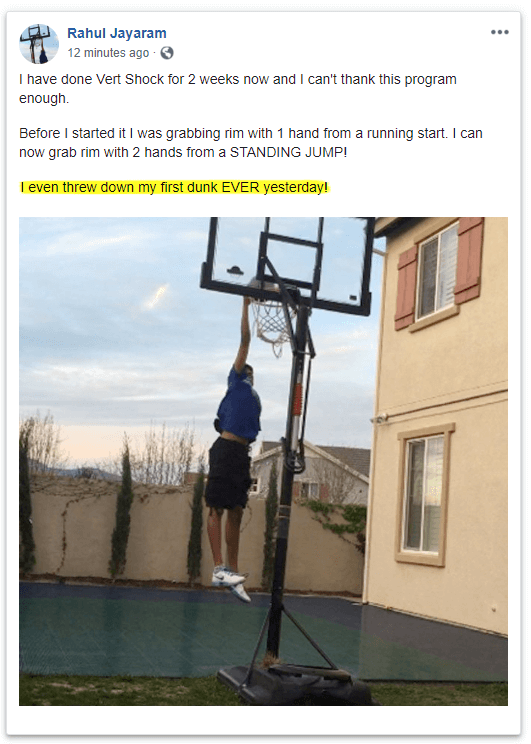You wanna learn how to jump higher? Jumping higher is a skill that takes extensive training to attain.
It requires strength, power, speed, and technique and that’s why there are so many coaches that offer services like this for a fee. If you are a beginner or professional athlete that needs to jump higher, you should follow the advice below.

Generally, this field is known as a fitness, and a lot of businesses have come up to offer some or all fitness aspects related to the field. There are gym instructors, fitness doctors, private trainers, bio-data analytics, etc.
Whether you have scheduled for jumping classes because of the sport you take part in (volleyball, basketball, etc) or your intention is entirely private, this article will, however, give a detailed guide on how to jump higher in anything.
Exercises for Higher Jumping

These exercises include strength improvement practices such as squats, dynamic step-ups, and lunges. Also, the power of an individual needs to be worked on involving quick moves and plyometrics.
With plyometrics, you are guaranteed speed and strength blended using a series of explosive bounding exercises, jumping and hopping drills, and other practices that give the advantage.
Below are some of the most effective and efficient ways one can use to improve fitness and vertical jump in the process.
Jumping Higher Exercises:
Full squats: the practice is to build strength and power. It will make you more agile as well.
Single-leg squats: squats are generally designed to improve your bottom part of the body. Single-leg squats can be utilized without single equipment. This exercise is great for the hips, Hamstrings, Gluteus Maximus, quadriceps, and calves. It will boost your stability and flexibility.
Dynamic step-ups: step-ups are used as a universal exercise for any sport or general fitness. Cardio doctors will recommend it because it is great for the heart. It is one of the best practices for strength and you can do it from any place, and it does not have high injury risks.
Plyometrics: plyometric offers a series of alternative exercises that seek to establish a particular goal in the body. The most recommended practices for jumping are the jumps, hops and bounding movements. The exercises are high-intensive, preparing your body and making it not only strong and fast, but agile as well.
Sprints: sprints are arguably the most efficient method to get the most of your body muscles to be engaged at the same time. It involves a series of short, abrupt and intense sprints.
Lunges: get weights and a room and be ready to transform your whole experience of power, speed, strength, flexibility, and stability in your body, especially the legs. You can do this at home.
Agility drills: These are basically hopping and jumping drills in quick succession in no ordered manner. You want to jump higher vertically, then, you need coordination, speed, and power as well. This is what such drills prepare the body for.

Stair running: you can use your house stairs for a quick workout session. This exercise drains your body, however, it improves blood flow and helps with heart conditioning. It also helps with your leg muscles, calves, quads and gluts.
Vertical Jump Program (8-15 inches higher jumping):
There is a detailed program dedicated to vertical jumping only. It can improve your vertical jumping 8-15 inches.
Here is proof that works very well:



Click here to check it out and get 50% OFF.
Practice tips
While practicing for a high vertical jump, it is great to include some other muscle exercises.
- Start with stretching exercises to kick start your practice session.
- Incorporate some slow but controlled activities with toe lifting and ankle stretching to prepare the body for hops, jumps, and landing.
- Start off at a slow pace then you can go with a faster pace for intensive plyometrics.
- Rest between hard workouts. Your training schedule should include rest time for your body to cool off.
How to jump higher to make a dunk
How to Jump Higher and make a dunk? Check this FREE guide. Click To TweetPracticing is the key to any success in this sport. Making dunks may prove difficult for you if your height is against you.
Use the above-highlighted practice exercises to improve your body strength, power, and speed. The exercise should not interfere with your flexibility and body coordination.
That is why practices aimed to improve your jumping skills, and landing techniques are incorporated into the whole basketball training and exercise package. Below are some of the common strides taken by the pros to improve their dunking game.
Choose the right exercise for you and target it until you get the required results. Leg presses, squats, lunges, deadlifts, and leg curls work well to improve balance in your lower body as well as explosiveness by improving power, speed, and strength.
Stretching can be a good starter and ending of your exercise sessions. Stretching can be varied depending on what you want to work on, general stretching for muscles and joints improve your flexibility.
There is always a concern about form and injuries when a player is not flexible enough. Dunking of all other techniques requires a player to have mastered the skill and be flexible enough to execute it.
Training is incomplete without the most common practice regimen – plyometrics. As earlier explained, it includes high-intensity jumps, hops, and bounds. These exercises help the legs and the body to be ready for jumps and will improve the speed, power, pace, and strength of the legs.
Conclusion: How to Jump Higher
As an athlete (beginner or professional), you can help your body to build strength, power, and speed (most important aspects in jumping) by performing basic weight exercises which are firstly slow and controlled before you pick on more intense and explosive activities such as plyometrics.
Training should always involve stretches, high-intensity exercises and dynamic drills that help your body in all angles, you need to be able to leap higher and make a dunk.
If you want to improve your jumping up to 15 inches, click here. You will be shocked!
Pingback: Exercises To Make You Jump Higher For Basketball - IMVU Hair Textures
Pingback: Exercises To Make You Jump Higher For Basketball - Basketball Workouts
Pingback: Exercises To Improve Jumping For Volleyball - Basketball Workouts